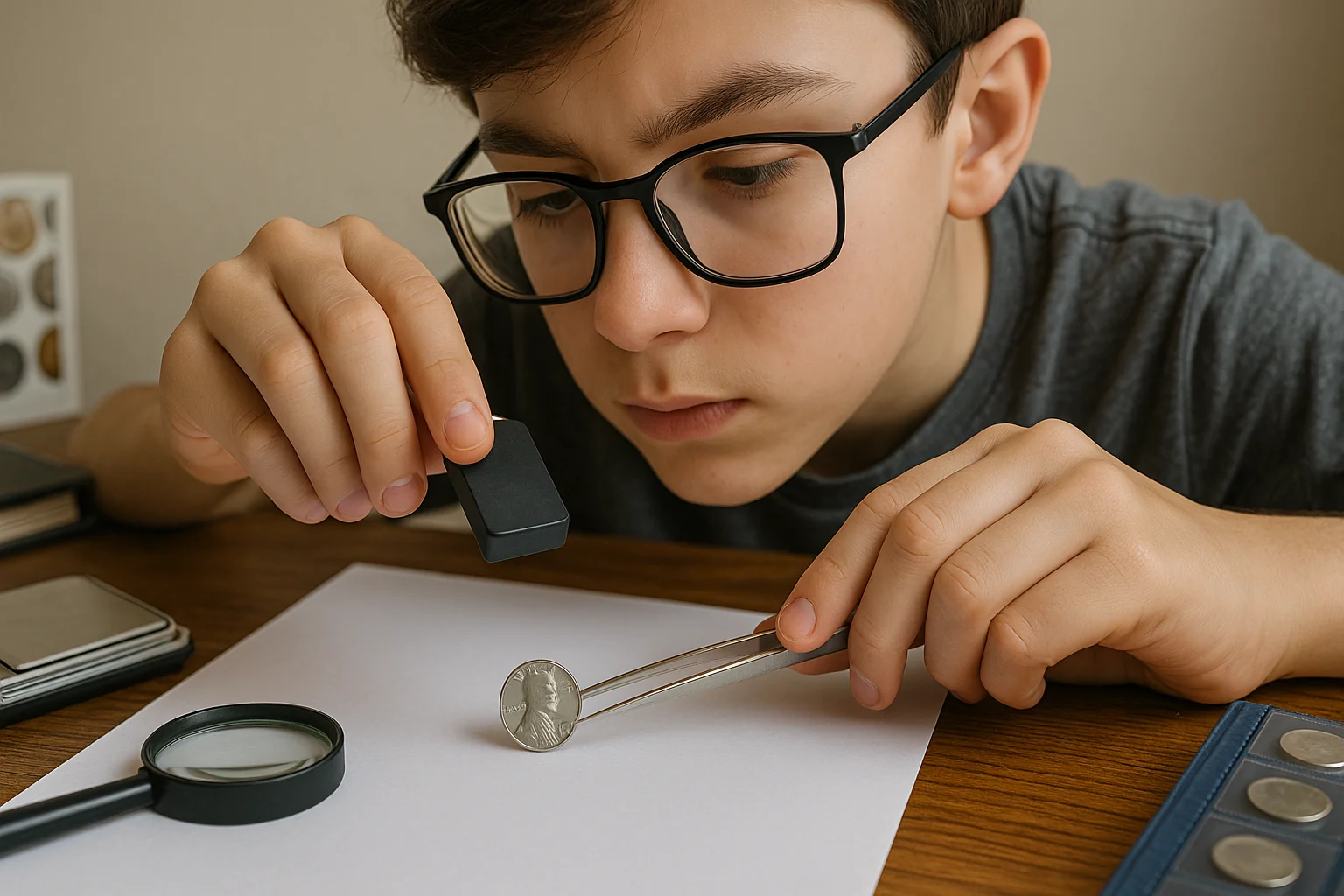Why do so many people search for 1943 pennies? Because in rare cases, they’re worth more than a luxury car — and sometimes even more than a house. That’s enough to make anyone take a second look at a coin from this year.
But the reality behind the 1943 penny value isn’t all hype or headline-grabbing numbers. It is a mix of wartime history, unexpected minting errors, and a lot of confusion. Some 1943 pennies are incredibly common and worth just a few cents. Others, struck under unusual circumstances, are among the most valuable coins in U.S. history.
The key is knowing the difference — and that starts with understanding why these coins were made the way they were, what types exist, and how to tell them apart. So, today we would like to explain the coin’s background, ways of testing or spotting fakes and what actually makes some versions of it so valuable.
Wartime Metals and an Unusual Coin
The story of the 1943 penny begins in the middle of World War II. As the U.S. ramped up its military production, copper became a critical resource that is needed for different purposes, e.g., for ammunition, wiring, and military equipment. To conserve copper for the war effort, the U.S. Mint made a bold decision: in 1943, they would strike Lincoln cents using steel coated with zinc instead of copper.
These pennies looked completely different from what Americans were used to — shiny, silvery, and slightly lighter in weight. And unlike the traditional copper versions, they were magnetic, which still makes them stand out today.
Here is how the 1943 steel cent differed from earlier coins:
- It was made from steel, not bronze
- It had a thin zinc coating to prevent rust
- It weighed about 13% less than a standard copper penny
- It could be picked up with a magnet
Fun fact: The steel cents were so light and shiny that people sometimes mistook them for dimes — and vending machines often rejected them.

Steel, Copper, and Surprises: The Three Faces of the 1943 Penny
While the vast majority of 1943 pennies were made from zinc-coated steel, a few copper coins managed to slip through the cracks. These were likely minted using leftover bronze planchets (coin blanks) from 1942. Today, those mistakes are considered some of the rarest and most valuable Lincoln cents in existence.
To complicate things further, a number of 1943 steel cents were plated with copper in later years by scammers hoping to trick collectors. That is where things get tricky — and where knowledge becomes your best defense.
In the table below you can see the main types of 1943 pennies and what they are worth today:
1943 Penny Types and Estimated Values
| Type | Mint Mark | Metal | Magnetic | Circulated Value | Uncirculated Value |
| 1943 Steel Penny | None (Philadelphia) | Steel | Yes | $0.10 – $1.00 | $5 – $25 |
| 1943-D Steel Penny | D (Denver) | Steel | Yes | $0.20 – $2.00 | $10 – $40 |
| 1943-S Steel Penny | S (San Francisco) | Steel | Yes | $0.30 – $2.50 | $10 – $50 |
| 1943 Copper Penny | None | Copper | No | $60,000+ | $150,000+ |
| 1943-D Copper Penny | D | Copper | No | $100,000+ | $200,000+ |
| 1943-S Copper Penny | S | Copper | No | $70,000+ | $180,000+ |
These values are impressive — but they’re not the ceiling. Some 1943 copper pennies have shattered records at auction, proving just how valuable these rare mistakes can be. For example:
- 1943-D Bronze Cent sold for $1.7 million at Heritage Auctions in 2010
- 1943 Bronze (no mintmark) fetched $372,000 in 2021, also through Heritage
These coins are the exception, not the rule — but they’re a big reason why collectors and curious finders keep checking their change.

Testing Your 1943 Penny — Real or Fake?
Once you’ve learned about the different types of 1943 pennies, the next question is obvious: How do you know if yours is real — and rare? The good news is, there are a few easy tests you can try at home to rule out the most common fakes.
The bad news is that not all fakes are obvious, and some can fool even experienced collectors at first glance. Below you can go through the essential tools and steps that can help you separate the valuable from the worthless — and avoid getting fooled by altered coins.
Simple Tests to Verify Your 1943 Penny
Before you rush to a coin dealer, try these three quick checks:
- Magnet Test
Steel cents are magnetic. Copper cents are not.
➤ If your penny sticks to a magnet, it’s almost certainly steel — and not one of the valuable copper errors.
- Weight Test
Use a small digital scale with at least 0.01g precision.
- Steel cent: ~2.70 grams
- Copper cent: ~3.11 grams
➤ If it weighs closer to 2.7g, it’s steel. Anything above 3.0g is worth taking seriously.
- Visual Check Under Magnification
Look for signs of wear, damage, or alteration — especially around the date. Some fake 1943 copper pennies started out as coins from other years and were manipulated.
Tip: If you are unsure after these tests, try using Coin ID Scanner — a mobile app that analyzes your coin’s photo and helps you identify the type, metal, and even possible mint mark variations. It is a quick way to quickly receive the information and use it to spot obvious fakes before consulting an expert.
Common Fakes You Should Watch Out For
Unfortunately, many coins that look like rare 1943 copper cents are just clever fakes. Here are the two most common tricks:
- Copper-Plated Steel Pennies
Some people take ordinary 1943 steel cents and coat them with a thin layer of copper to mimic the rare bronze version. These fake coins may appear convincing at first glance, but they’re still magnetic and too light.
➤ How to spot it: Use a magnet. If it sticks, it’s steel — no matter the color.
- Altered Dates
Another common scam involves modifying the date on a copper penny — for example, changing a 1948 to look like 1943 by shaving or reshaping the “8.” This is surprisingly common, especially on online marketplaces.
➤ How to spot it: Use a magnifier to examine the date closely. Look for irregularities in the number “3,” uneven spacing, or file marks.
What to Do If You Think You’ve Found a Rare 1943 Penny
So, you’ve run the tests, double-checked the weight, and your 1943 penny doesn’t stick to a magnet. Maybe the color looks just right, and the date appears untouched. Is it time to celebrate? Not just yet — but you might be on the right track.
Here is what you should do next if you think your coin could be one of the rare copper 1943 cents:
- Don’t clean it. Seriously — put the polishing cloth down. Cleaning coins, even gently, can scratch or dull the surface, lowering the value instantly. Leave the coin exactly as you found it.
- Store it safely. Place the coin in a soft flip or a non-PVC plastic holder. Avoid bare contact with fingers, which can leave oils or residue that damage the surface over time.
- Get a second opinion. Even if the coin passes the magnet and weight test, expert confirmation is essential. Look for a professional coin dealer or submit the coin to a reputable grading service like PCGS or NGC. They will authenticate, grade, and encapsulate the coin — a must if you ever plan to sell it.
- Prepare documentation. Take clear photos of both sides of the coin, preferably in good lighting and next to a ruler or scale for reference. Note where and when you found it — provenance can matter.
Don’t Let Fool’s Copper Trick You
The 1943 penny remains one of the most talked-about coins in U.S. numismatic history — and for good reason. While thousands of steel cents are still floating around in collections, jars, and old boxes, it’s the rare bronze ones that spark dreams of treasure.
But with those dreams come plenty of fakes, altered coins, and unrealistic expectations. That is why it pays to be informed. And due to using simple tools, smart tests, and a cautious mindset, you can separate myth from money — and maybe even uncover something truly extraordinary.
So the next time you come across a 1943 penny, don’t just toss it aside. It might be nothing. But then again… it might be the one.
